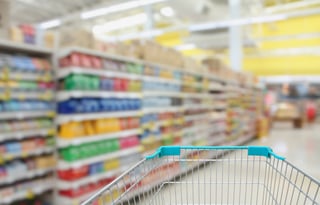 If you’ve never had to plan a store layout before, you may not have consciously noticed how different the layout can be from one type of store to another. And that's actually the goal. An effective layout should not be noticeable. Nonetheless, how you arrange your store fixtures and displays can have a tremendous impact on your sales.
If you’ve never had to plan a store layout before, you may not have consciously noticed how different the layout can be from one type of store to another. And that's actually the goal. An effective layout should not be noticeable. Nonetheless, how you arrange your store fixtures and displays can have a tremendous impact on your sales.
When thinking about the best layout for your store, you’ll want to consider these three things:
- Physical space
- Psychological impact
- Aesthetics to pull it all together into your unique look
1. Physical Space
In general, you can design your layout with:
- Straight aisles — like a grocery or big box store
- Diagonal aisles — which are also straight but offer improved cross-store visibility for customers and sales personnel
- Angled or curved aisles — that are more like informal pathways
- A geometric pattern
- A combination of patterns
A layout that works makes it easy to navigate your store. What’s best? That depends on the size and shape of your store’s footprint and the type of merchandise you need to display. For example, lawnmowers and furniture have different space requirements than jewelry or clothing. Display fixtures create your aisles, so make sure they match the scale of your layout. Signage also helps direct traffic within your store.
2. Psychological Impact
The more comfortable you make shoppers, the longer they will stay. And the more likely they are to return. Subtle details appeal to the emotional side of buying – something that applies to every shopper in every type of store. If you have specialized clientele – kids or the elderly, for example – consider their special needs.
Aisles must be wide enough to meet ADA minimums, but you'll also want to consider the “butt brush" effect. Americans tend to avoid spaces where they may inadvertently brush up against other shoppers.
Color affects people in very different ways, too. For instance, red is famous as a “power” color – use too much and you’ll put people off. Use your brand-specific colors, and choose another contrasting or complementary color for accents.
Technology tools such as kiosks with touchscreens and video or digital displays can have a "come hither" power that strengthens your store layout and encourages product engagement.
3. Aesthetics
It’s good if customers step inside your store, glance around, and make a beeline for the object of their desire. It’s even better if they make stops or side trips along that journey, so they can see, handle, and decide to buy more.
The trick is to start with proven fundamentals of store layout, then add your own unique twist. That sets your store apart from the competition and sets it up as a preferred shopping destination. Aesthetic details pull together functional and psychological elements within your store to create a one-of-a-kind atmosphere.
With that in mind, design your checkout counter as the pièce de résistance of your store layout. It may be the final stop on your customer’s journey, but it can reinforce their memorable shopping experience and encourage them to return.
